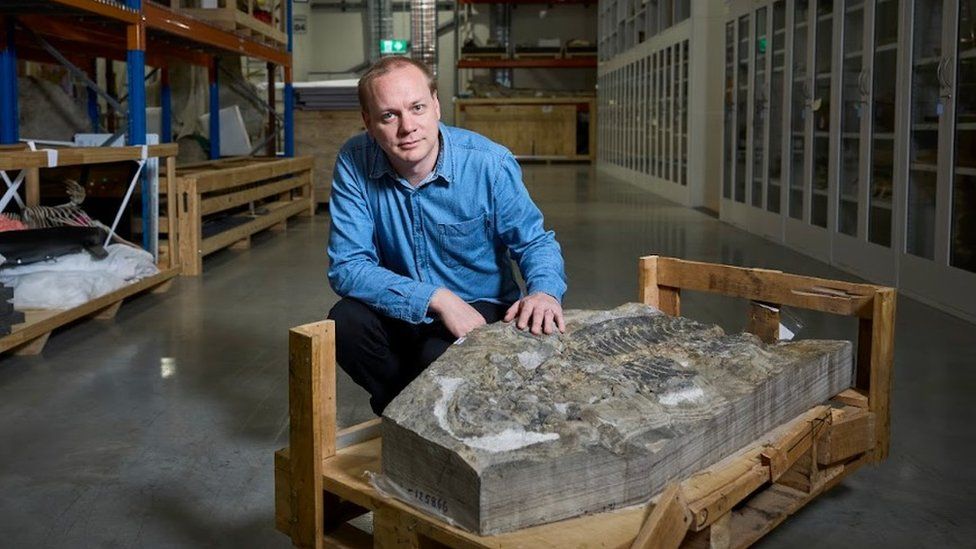ARTICLE AD BOX
 Image source, Richard Freeman
Image source, Richard Freeman
Palaeontologist Lachlan Hart was behind the landmark discovery
By Hannah Ritchie
BBC News, Sydney
Scientists have identified a new species of amphibian that occupied Australia some 247 million years ago.
The finding ends a mystery that has captivated researchers since the 90s, when the creature's fossilised remains were found by a retired chicken farmer in New South Wales.
Less than 10 fossils of the lizard-like species have been identified globally.
Experts say the discovery may "rewrite the evolution of amphibians in Australia".
It was a broken garden wall at his home in Umina - a roughly 90-minute drive north of Sydney - that led to Mihail Mihaildis's discovery of the extraordinary fossil, almost three decades ago.
The retired chicken farmer had purchased a 1.6 tonne sandstone slab to fix the problem. But as he sliced through the stone's outer layers, the immortalised outline of an unknown creature revealed itself.
Mr Mihaildis contacted the Australian Museum in Sydney about his discovery, and in 1997 he handed the fossil over.
It was there in a climate-controlled display room that Lachlan Hart - the palaeontologist who would ultimately decode its petrified remains - first encountered it as a child.
"I was obsessed with dinosaurs... and so 12-year-old me saw that fossil on display back in 1997. And then 25 years later it became part of my PhD, which is insane," Mr Hart says.
Mr Hart says it was "dumb luck" that led to his team, which was studying life in Australia's Triassic era some 250 million years ago, being given the fossil to identify.
Remarkably, the mould contains a "nearly complete skeleton", which is almost unheard of, Mr Hart explains.
"It's got the head and the body attached, and the fossilisation of the creature's skin and fatty tissues around the outside of its body - all of that makes this a really rare find."
From that data, Mr Hart and his colleagues estimate the amphibian was approximately 1.5m in length and that it had a salamander-shaped body. The newly identified species has been named Arenaepeton supinatus, which means "sand creeper on its back" in Latin.
Scientists say the carnivorous amphibian once lived in the freshwater lakes and streams of Sydney. This particular species belongs to the Temnospondyli family: resilient amphibians that survived two of the earth's five mass extinction events, including a series of volcanic eruptions that eradicated 70-80% of all dinosaurs roughly 250 million years ago.
Only three other fossils capturing the Temnospondyli species have been successfully identified in Australia.
The findings, which were published Tuesday, show that "Australia was a great place for animals to evolve and find refuge after mass extinctions," Mr Hart says.
The extraordinary fossil will go on full-time display at the Australian Museum later this year.

 1 year ago
18
1 year ago
18








 English (US)
English (US)